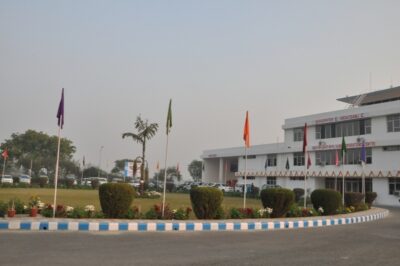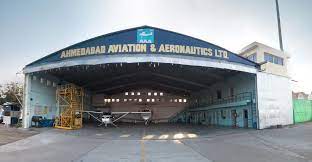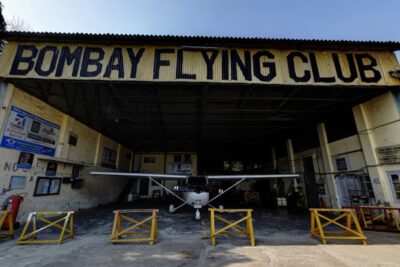Top Flying Schools in India: DGCA Certified Training Guide

Table of Contents
Embarking on a journey to the skies? Your dream of becoming a pilot could be closer than you think. With a plethora of flying schools across India, the opportunity to soar high is accessible and promising. Whether you’re eyeing a career in commercial aviation or simply have an unquenchable passion for flying, there’s a place for you.
Choosing the right flying school is pivotal, and India’s top institutions like the Indira Gandhi Rashtriya Uran Akademy (IGRUA) and the Bombay Flying Club are renowned for their rigorous training and excellent track records. These schools not only demand academic qualifications but also test your mettle through entrance exams like IGRUA, ensuring they shape well-trained pilots ready for any challenge.
Indira Gandhi Rashtriya Uran Akademi (IGRUA)

When you’re considering a career as a commercial pilot in India, it’s vital to select a top-tier flight school. Among the leading institutions, Indira Gandhi Rashtriya Uran Akademi (IGRUA) stands out for its impeccable reputation and comprehensive training programs. Established in 1985, it was the country’s first flight academy dedicated to commercial pilot training. As you explore your options, it’s clear why IGRUA is a preferred choice for many aspiring aviators.
IGRUA operates under the Ministry of Civil Aviation and has a rigorous selection process that includes an application and a pilot aptitude test. Pioneering the way for pilot training, this sought-after academy has guided numerous candidates to successful careers in aviation.
Situated in the Amethi district of Uttar Pradesh, IGRUA boasts a fleet of modern aircraft including TB20, DA40, Zlin, and DA42. They ensure that their training standards meet the demands of the aviation industry, thereby producing pilots who are equipped to handle even the most challenging situations.
Opting for IGRUA also means preparing yourself for significant financial commitment. With fees amounting to 45 lakhs for the entire CPL course, it’s a substantial investment in your future. But the potential return on investment is considerable, given the ever-increasing demand for well-trained commercial pilots in India’s burgeoning aviation sector.
| Best Flying Schools | Average Estimated Fees in INR |
|---|---|
| Indira Gandhi Rashtriya Uran Akademi | 45 lakhs – Full CPL |
| Madhya Pradesh Flying Club | 8.5 lakhs – Per Year |
Ahmedabad Aviation and Aeronautics Ltd (AAA)

When your ambitions take flight, AAA is there to provide a formidable training platform. This esteemed academy was established in 1994 and remains dedicated to molding pilots to suit the dynamic needs of the aviation industry. With its base at Mehsana Airfield and SV Patel International Airport, AAA boasts a multi-engine aircraft and four single-engine crafts, all approved by the DGCA for pilot training.
If you’re aiming for a Private Pilot License (PPL), Commercial Pilot License (CPL), or an Instructor Rating, AAA could be your launch pad. Remarkably, AAA is the sole flying institute in Ahmedabad, Gujarat, equipped with a fleet of aircraft that includes the tried-and-tested Cessna 172 and Cessna 152.
Training from AAA doesn’t just mean time in the air. Ground classes form an integral part of the curriculum, which includes:
- Commercial Pilot Licence Ground Class
- Private Pilot License Ground Class
- Aspirant Pilot Licence Ground Class
- Instructor Rating Ground Class
- Flying Hours Building
The fee for the complete CPL program stands at INR 2,050,000, reflective of the comprehensive nature of the training provided.
AAA is more than just a flying school; it’s a Government of India-approved Flying Training Organization (FTO) and an Air Charter Company. The lack of an entrance test simplifies the admission process, requiring only a personal interview for enrollment. At the ground school, modern audio-visual aids and air-conditioned rooms are at your disposal, ensuring a conducive learning environment.
Here is a snapshot of essential information about AAA to consider:
| Particulars | Details |
|---|---|
| Institution Type | Public |
| Foundation Year | 1994 |
| Admission Criteria | No entrance test; Personal interview |
| Approved by | Government of India FTO |
| Courses Offered | CPL, PPL, Aspirant Pilot Licence, etc. |
| Course Fee (Full CPL) | INR 2,460,000 |
In comparison, AAA stands out among 22 flight schools in India that specialise in fixed-wing aircraft training. With its modern facilities, robust fleet, and tailored programs, it’s an option worth considering on your journey to the skies.
Rajiv Gandhi Aviation Academy (RGAA)

As you explore your options for pilot training in India, Rajiv Gandhi Aviation Academy (RGAA) in Thiruvananthapuram should be on your radar. Established in 1959, this state-owned facility has a long history of cultivating aviation professionals. With no entrance test for admission, RGAA opens its doors to a diverse group of aspiring pilots. It’s not simply a flying school; it’s an institution approved by the Directorate General of Civil Aviation (DGCA) and affiliated with the Government of Andhra Pradesh, assuring quality and compliance with regulatory standards.
RGAA offers a range of courses tailored to meet various pilot training needs:
- Commercial Pilot License (CPL)
- Instrument Rating (IR)
- Multi Engine Rating (ME)
- Private Pilot License (PPL)
- Student’s Pilot License (SPL)
- Foreign License Conversion
- Aircraft Maintenance Engineering (AME)
Each course is designed to provide comprehensive training, and the full CPL program comes at a fee of INR 20 lakhs. The academy prides itself on its structured framework, comprised of several dedicated sections:
- Flight Section led by the Chief Flight Instructor
- Maintenance Section managed by the Maintenance Manager
- Ground Class Section run by the Chief Ground Instructor
- Administrative Section overseen by the Secretary
RGAA’s operation is bolstered by its historic name changes, reflecting its evolving commitment to aviation education. The once Kerala Flying Club transformed into the Kerala Aviation Training Center in 1980 before taking the name of Rajiv Gandhi Academy for Aviation Technology under the Government’s stewardship. This evolution not only marks RGAA’s dedication to providing premier aviation training but also ensures you’re part of a legacy that’s been lifting off since the days of the Indian Companies Act of 1956.
By choosing RGAA, you’re aligning your aviation aspirations with an academy that’s seen the industry’s transformative years and remains a respected player in pilot training today.
Madhya Pradesh Flying Club (MPFC)

When considering a pilot’s training, the legacy of the institution plays a crucial role in your choice. Madhya Pradesh Flying Club (MPFC), founded in 1951, is a testament to a rich history in aviation excellence. With over 70 years of experience, MPFC stands out as a premier flying club that has seen the evolution of aviation training firsthand.
The club’s journey with the Government’s aircraft management, spanning a notable 31 years, is proof of its competence and reliability. Such a long-term government association isn’t just about maintaining aircraft; it’s about trust, consistency, and performance in the skies.
Approved by DGCA, MPFC’s contribution to the aviation sector is significant, training not just civilians but also military personnel. The club has been instrumental in the development of pilots for the Indian Air Force, cementing its reputation as a linchpin in the nation’s aviation training framework.
Catering to a diverse set of aspirations, MPFC offers a plethora of courses:
- Private Pilot License (PPL)
- Commercial Pilot License (CPL)
- Instrument Rating (IR)
- MultiEngine Rating
- Simulator Training
The aircraft line-up at MPFC is diverse, featuring Cessna 152A, Cessna 172R, and multiengine six-seater aircraft P68C TC and Baron G58. These aircraft not only provide a varied experience but also prepare you for different flying conditions and scenarios.
With cost being a deciding factor for many, MPFC has positioned its CPL program competitively at INR 850,000. Understanding budget constraints while not compromising on training quality is what you can appreciate while considering MPFC for your aviation journey.
Diving into the course details, you’ll find that MPFC has structured its curriculum to foster a comprehensive understanding of aviation fundamentals, enriched with practical flight experience. The aim is to mould competent pilots who are not just skilled in flight, but also deeply knowledgeable about the mechanics and principles that govern aviation.
National Flying Training Institute (NFTI)

When considering your options for flight schools in India, the National Flying Training Institute (NFTI) stands out for its blend of theoretical knowledge and practical flight training. Located in Gondia, the NFTI was launched in 2007 and represents a strategic partnership between CAE Inc. and the Airport Authority of India (AAI). Known for its rigorous training standards, NFTI adheres to guidelines set by both the Directorate General of Civil Aviation (DGCA) and the International Civil Aviation Organization (ICAO).
Diving into the course offerings, you’ll find that NFTI provides a comprehensive education across a multitude of aviation disciplines. The training scope ranges from Airline Pilot Training to Helicopter Pilot Training and even includes Aviation Maintenance and Cabin Crew Training. Upon successful completion of the courses, candidates earn their commercial pilot license (CPL) with valuable Multi-Engine (ME) and Instrument (IR) Ratings that are crucial for a burgeoning aviation career.
| Particulars | Details |
|---|---|
| Institution Type | Private |
| Foundation Year | 2007 |
| Admission Criteria | CAE Aircrew Selection System (CASS) |
| Approved | Flight Training Organisation (FTO) |
| Courses Offered | Airline Pilot, Business Pilot, Helicopter Pilot, and various others |
Financially, it’s important to note that the full CPL program at NFTI comes with a fee of INR 42,00,000. While steep, this investment into your future includes access to one of the country’s largest aircraft fleets, making NFTI the second biggest flying school in terms of resources. The institute’s partnerships with airlines like Indigo, Spicejet, and Qatar Airways highlight its industry connections and the potential career pathways available post-training.
NFTI’s full-time pilot training programs span 17 to 19 months, a period in which cadets are fully immersed in both the academic and hands-on realms of aviation. The detailed curriculum ensures you’re not only prepared to pass your exams but to excel in the cockpit and beyond. With an array of aircraft platforms to train on, you’re guaranteed exposure to real-world aviation scenarios that build competency and confidence.
Government Flying Training School

Exploring the heritage of aviation training in India, you’ll find that the Government Flying Training School (GFTS) in Jakkur, Bangalore, has been instrumental in shaping the skies. Established in 1950, GFTS is one of the earliest institutions providing rigorous pilot training. It’s a state-owned facility, turning enthusiastic individuals into skilled pilots.
Set on a sprawling 214-acre campus, GFTS isn’t just about its size. It boasts comprehensive facilities that cater to the very essence of flying. You’ve got hangars, maintenance areas, and even a fuel station – all maintained at the highest standards. The campus also dedicates space for classrooms and training modules, ensuring that learning and flying go hand in hand.
If you’re eyeing a career in aviation, GFTS offers the much-coveted Commercial Pilot Licences (CPL) and Private Pilot Licences (PPL). These programmes are designed to equip you with not only the technical know-how but also the practical skills necessary to excel in the aviation industry.
While the fee structure at GFTS is not specified, it’s the quality of training that sets this institution apart. Here, you’re looking at a robust foundation for your flying career, grounded in an environment that combines historical significance with modern training methods. With accreditation from FTO, you’re assured that the courses meet the stringent standards required for pilot training.
In your journey to becoming a pilot, GFTS could very well be a milestone. With facilities that ensure you can mimic real-world aviation challenges, your flight path in the skies begins with the solid groundwork laid out here.
Bombay Flying Club

Stepping into the world of aviation requires excellent training and guidance. At the Bombay Flying Club, established in 1928, you’ll find a rich history of excellence. The club, affiliated with both the Directorate General of Civil Aviation (DGCA) and Mumbai University, is a beacon of professionalism in the field of aviation training. It holds a special place in the country’s aviation history, with the likes of Mr. J.R.D. Tata, the pioneer of Indian aviation, having received his pilot license here in February 1929.
Training at the club includes a comprehensive lineup of programs such as the Aircraft Maintenance Engineering, Commercial Pilot Licence, BSc Aeronautical Degree, BSc Aviation Degree, Hobby Flying, Executive PPL, and even a course on Remotely Piloted Aircraft Systems/Drones. You’ll experience firsthand the adrenaline rush of flying with their diverse fleet which includes the Cessna 152A, PIPER PA18, Cessna 172, and the Cessna 172R with a glass cockpit feature, resembling modern airline aircraft, as well as the Seneca twin engine aircraft.
The location of the club manifests its commitment to immersive training, situated at the edge of the bustling Juhu Aerodrome. Here, comprehensive ground schooling is coupled with hands-on flight time, providing a well-rounded path into the aviation sector.
With a fee set for the CPL program at INR 41,00,000, the Bombay Flying Club not only opens avenues for future aviators but also ensures that their journey is rooted in a tradition of unparalleled quality and diligence in the skies above India.
Indian Aviation Academy

When you’re surveying the landscape of aviation training in India, it’s essential to explore the offerings of Indian Aviation Academy. Known for their rigorous training modules and quality education, these academies not only prepare you for the sky; they ensure you meet and exceed international standards. This is where your dreams take flight, with comprehensive courses that cover everything from the basics to the nuances of flying.
Ligare Aviation Training Academy, situated in New Delhi, stands out as the sole approved training academy for general aviation that aligns with international quality benchmarks. Courses here are tailored to sync with Indian regulations while maintaining a global perspective. This means you’re getting an education that prepares you for success both at home and abroad.
- FAA Part 141 Approval: Avel Flight School, based in Chennai, prides itself on being India’s premier FAA Part 141 approved flight school. This signifies that their training programs adhere to the strict standards set by the Federal Aviation Administration.
WeOne Aviation Academy and CR Aviation Academy are other notable institutions significantly contributing to the growth and success of aviation training in India. These academies focus on preparing students for DGCA written exams, such as CPL, ATPL, and RTR. With state-of-the-art facilities and effective ground schooling, students across India receive guidance that propels them towards their goal of becoming skilled pilots.
The innovative and dynamic approach of these academies ensures they keep pace with the rapidly evolving aviation industry. You’re not just learning how to fly; you’re being shaped into a well-informed, technically proficient, and confident pilot ready for the demands of today’s airspace. Each academy brings something unique to the table, crafting a niche that caters to the varied interests and objectives of aspiring aviators.
The Importance of Flying Schools in India
Providing Professional Flight Training
When you’re looking to take to the skies, professional flight training is imperative. Flying schools in India are designed to turn novices into skilled aviators, equipped with the practical experience necessary for a successful career. You’ll find that these institutions offer various courses that include Commercial Pilot Licenses (CPL), Multi-Engine Ratings (ME), and Instrument Ratings (IR). By enrolling in a high-calibre flight school, you’re not just learning to manoeuvre aircraft; you’re also learning the intricacies of air navigation, meteorology, and aviation laws that are vital for any pilot.
Building a Foundation of Skills and Knowledge
At the core of any worthwhile endeavour stands a strong foundation, and becoming a pilot is no exception. Indian flying schools lay this groundwork by combining classroom knowledge with hands-on flight experience. They provide a comprehensive curriculum that ensures you commence your flight training with a solid base in physics and mathematics—subjects essential for understanding flight mechanics. Additionally, modern simulators and flight training devices are used to reinforce this knowledge, allowing you to gain confidence and proficiency in a controlled environment before taking to the skies.
Fostering a Culture of Safety and Responsibility
Safety is the keystone in the realm of aviation. Indian flying academies underscore its importance, instilling a culture of safety and responsibility from day one. This is achieved through rigorous training focused on operational safety, risk management, and adherence to standard operating procedures. By doing so, you’re not only prepared to act decisively in unpredictable flight situations but also to uphold the safety standards expected by airlines and regulatory bodies worldwide. Training in India also means you’re part of a community that values accountability and prioritizes safety on each flight, aligning with the stringent standards of international aviation agencies.
Choosing the Right Flying School
When you’re on the brink of carving out a career in aviation, selecting an acclaimed flying school becomes the stepping stone that can elevate or hinder your journey as a burgeoning pilot. Here’s what you should consider when navigating through your options.
Accreditation and Certification
To ensure you’re not grounding your potential, it’s critical to join a school that operates under the Directorate General of Civil Aviation (DGCA) approval. These schools are held to stringent standards that translate into quality training for you. Rigorous checks on their infrastructure, training tools, and course content mean they’re aligned with both national and international requirements.
- DGCA approval is a must
- Confirm the school’s infrastructure meets standards
- Ensure access to modern training tools like simulators
The legitimacy of your aviation credentials hinges on the certification of the institute. An uncertified school might offer subpar training, squandering both your time and money and potentially stymieing your aviation aspirations.
Training Programs and Courses
Your flight school should provide a rich tapestry of courses that cover the vast altitude of information necessary for a seasoned pilot. Look for schools offering DGCA-approved CPL Training with Multi-Engine and Instrument Rating options. A comprehensive curriculum should encapsulate theory and practical sessions that mimic real-world scenarios, aiding in developing robust piloting skills.
| Type of Training | Description |
|---|---|
| CPL Training (CPL IR/ME) | Multi-engine endorsement and Instrument Rating in India or abroad |
| Fully Integrated CPL Course | Prepares for single-engine, multi-engine, night flying, and instrument flying |
Training sessions should be thorough enough to prepare you for the prerequisites of advanced simulations such as A320/B737 level D SIM training, underscoring the significance of fluency in English and hands-on PIC experience.
Experienced Instructors and Staff
The faculty steering your education should not only have their credentials documented but also a demonstrable record of their proficiency. It’s essential to learn from instructors who have cut their teeth in the aviation industry — individuals who can impart wisdom that transcends the pages of textbooks.
- Instructors should be highly skilled and experienced
- Faculty must display competency and a strong training background
- Seek out schools where the instructors have verifiable expertise
Having a team of seasoned aviators imparting knowledge ensures you’re not just learning to fly; you’re learning to navigate the complex topography of the pilot’s world with finesse and confidence. And while every flight school boasts about its prowess, it’s the quality of its human resources that often makes the pivotal difference in training outcomes.
Conclusion
Embarking on your journey to become a pilot is an exhilarating step and selecting the right flying school is crucial. You’ll want to ensure that your chosen institution meets all the necessary DGCA criteria and offers a blend of theoretical knowledge and practical experience. With access to cutting-edge simulators and the guidance of seasoned aviation professionals you’re setting yourself up for success. Remember the quality of your training will shape your future in the skies so choose wisely. Your dream of soaring high is within reach with the right foundation. Ready to take off?
Frequently Asked Questions
Which exam is required for pilot?
To pursue a Commercial Pilot License (CPL) in India, candidates are required to pass the All India Commercial Pilot License Examination (AICPLE) administered by the Directorate General of Civil Aviation (DGCA).
Can I join flying school after 12th?
Yes, after completing the 12th grade, you are eligible to enrol in a Commercial Pilot License (CPL) course at a recognized flight school, which will equip you with the theoretical knowledge and practical skills needed to become a pilot.
Which is India’s No 1 flying school?
India’s top flying school is often considered to be the Indira Gandhi Rashtriya Uran Akademi (IGRUA), established in 1985. It’s recognized by the Government of India and approved by the DGCA.
Is pilot a good career in India?
Being a pilot in India is a reputable and well-compensated career, with the average annual salary for pilots around Rs. 8,00,000, reflecting the high demand for skilled pilots in the Indian aviation industry.
How can I get admission in government flying school?
To get into a government flying school in India, you must have completed your 10+2 in Science with at least 50% marks, be at least 17 years old, and meet any additional requirements set by the institute.





